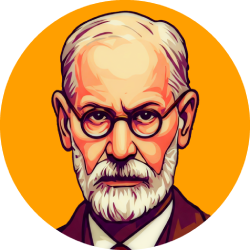Psychoanalysis, founded by Sigmund Freud, is an approach that seeks to understand the human mind through the exploitation of the unconscious. Over the years, psychoanalysis has crossed with various contemporary theories about the mind, enriching our understanding of human functioning. In this article, we will explore some of these intersections and how they contribute to a broader view of the human psyche.
Introduction to Psychoanalysis
Psychoanalysis is based on the idea that our thoughts, feelings and behaviors are influenced by unconscious factors. This means that many of our actions and decisions are guided for reasons that we are not aware. Psychoanalytic therapy seeks to bring these factors to consciousness, allowing patients to better understand themselves and overcome internal conflicts.
A common example of the influence of the unconscious is the dream. Dreams often reflect desires, fears and anxieties that we are not willing to face in our wakefulness. In analyzing these dreams, we can gain valuable insights on our underlying mental processes.
Connections with learning theory
Learning theory, which covers various approaches such as classical and operant conditioning, also meets psychoanalysis at interesting points. Classic conditioning, for example, shows how involuntary answers can be associated with neutral stimuli, leading to learned behavioral patterns. This can be seen as a manifestation of the unconscious processes that psychoanalysis seeks to explore.
In our daily lives, we can observe this in how we react to certain smells or sounds that remind us of past experiences. These associations often occur without being aware of them, illustrating the intersection between learning and psychoanalytic processes.
Intersections with neuroscience
Neuroscience, focusing on brain structure and function, offers a biological perspective to complement psychoanalytic theories. Neuroimaging studies have shown that specific areas of the brain are associated with different mental states, including those exploited by psychoanalysis, such as repression and formation of memories.
For example, amygdala, a small structure in the temporal lobe, plays a crucial role in the response to fear. This is relevant to psychoanalysis because fear and anxiety are emotions often explored in psychoanalytic therapies. Understanding how these emotional processes are mediated by the brain can offer new therapeutic strategies.
Implications for Mental Health
The combination of psychoanalysis with contemporary mind theories has significant implications for mental health. By recognizing the complexity of the human mind and the interconnection between conscious and unconscious factors, we can develop more effective therapeutic approaches.
For example, cognitive behavioral therapy (TCC) focuses on identifying and changing negative thinking and behavior patterns. Although different from psychoanalysis in its approach, CBT can benefit from understanding unconscious processes, recognizing that many of these standards have roots in past and family dynamic experiences.
In addition, understanding of neurobiology behind conditions such as depression and anxiety disorder can inform treatment strategies that combine medication with psychological therapies, offering a more holistic approach to mental health.
Future Conclusions and Perspectives
The intersection of psychoanalysis with contemporary theories about the mind is a vibrant and constantly evolving field. As we continue to explore the complexity of the human psyche, we can expect significant developments in the understanding and treatment of mental health conditions.
For the future, it is crucial that researchers and clinics from different disciplines continue to collaborate, sharing knowledge and perspectives. This will not only enrich our understanding of the human mind but will also lead to the development of more effective and personalized therapies.
In short, intersections between psychoanalysis and contemporary mind theories offer a multifaceted view of human experience. By exploring these connections, we can advance our journey to better understand ourselves and promote emotional and mental well-being.


